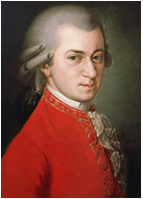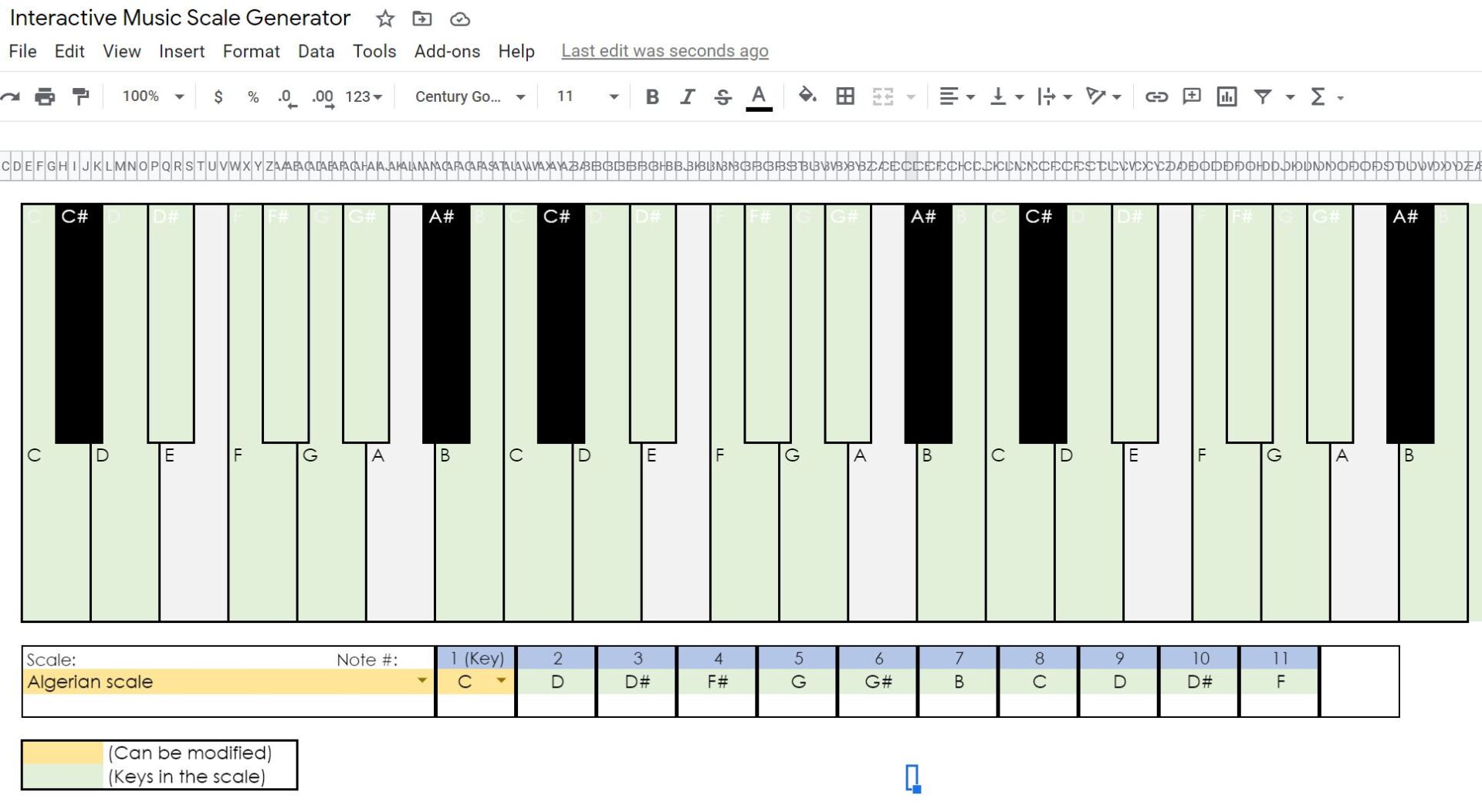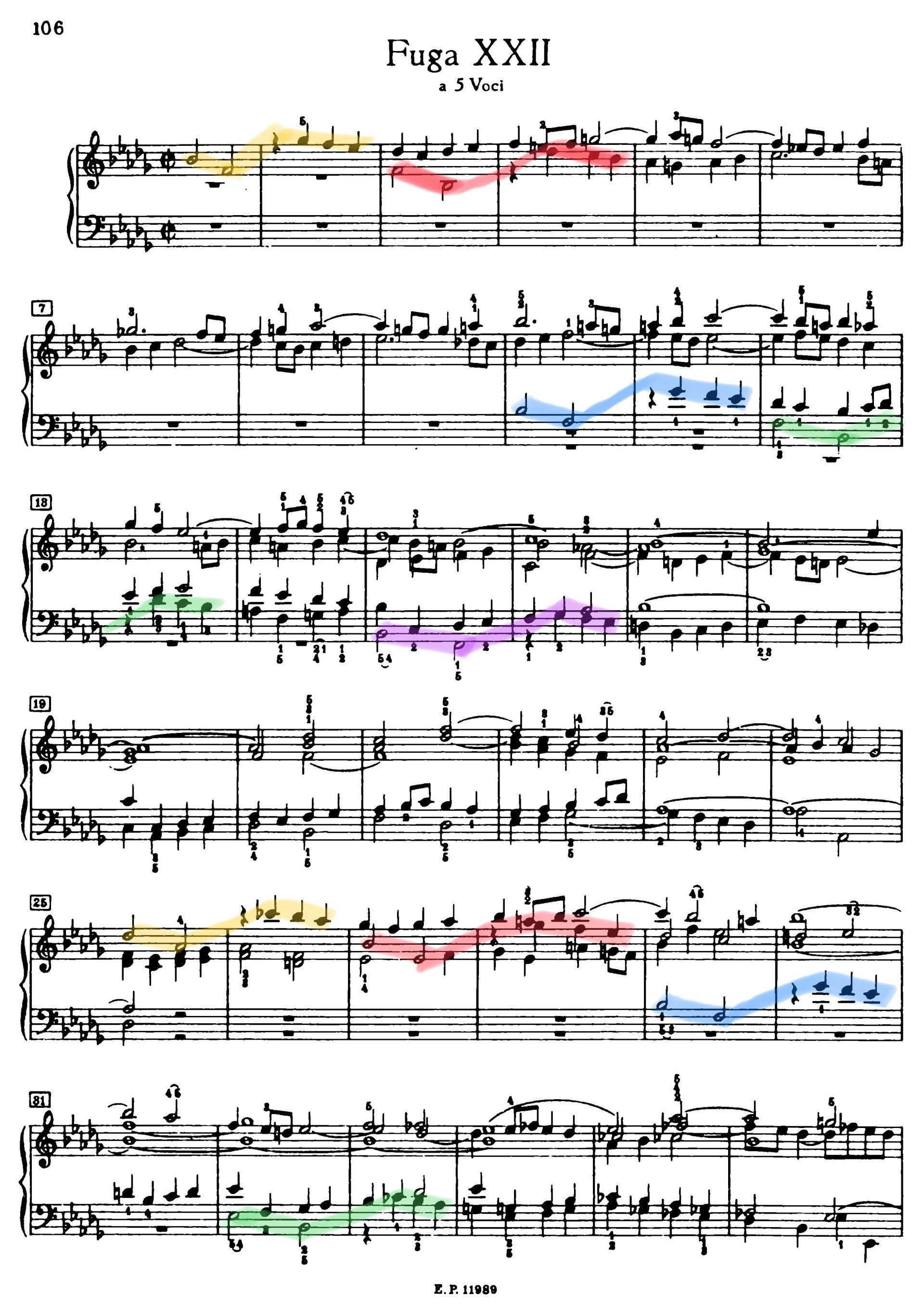Classical Period: Wolfgang Amadeus Mozart
This is an excerpt from Music Theory Level 5
Classical Period - Wolfgang Amadeus Mozart (1756-1791)
Mozart is an Austrian musician known for his prodigious nature. During his childhood in Salzburg, his father, Leopold Mozart, recognized his strong musical abilities and began parading Mozart as a child performer around Europe. Mozart performed in many venues, including at the palaces of emperors and other important figures. The frequency of travel however took a toll on Mozart's well being, forcing his father to stop his travels.
Following his childhood career as a performer, Mozart began to establish himself more and more as a composer. His genius was evident in his early childhood compositions, blossoming into fruition at age 18 with his first Sonata No. 1.
Until the final years of his life, Mozart was a fairly lighthearted and mischievous character, and enjoyed whimsical, earthy humor. This quality is portrayed throughout his earlier compositions, which are mostly light, gracious, or humorous, such as his Violin Sonata No. 17 K 296.
Mozart could also write with haunting beauty, as is evident with this clip from his Trio in C Major K548 Andante Cantabile.
Mozart wrote some of the world's most popular, lively and famous operas. The overture to The Marriage of Figaro is filled to the brim with life and vivacity, and is one of his best-loved pieces.
During his later life, Mozart's music became darker, but still retained the grace of his earlier writing, such as his famous Requiem in D Minor.
Mozart is renown for his adeptness at composition, specifically in the manipulation of musical forms, employment of humor, and later in life, complex contrapuntal textures (learned later). He composed over 600 works, which include 41 symphonies, 28 piano concertos, 22 operas, 23 string quartets, 36 violin sonatas, 18 piano sonatas, and a variety of smaller chamber works and standalone works like the famous requiem. These works are cataloged using K numbers instead of opus numbers, which follow chronological ordering. Below is a list of his most significant keyboard works:
- The 18 piano sonatas
- The 4 keyboard fantasias
- 3 rondos
- 16 sets of virtuosic variations
- The 28 piano concertos
All of Mozart's piano works were composed for a more primitive version of the modern piano called the fortepiano. It is important to recognize that this instrument was incapable of heavier textures and very resonant sounds, leading to the often emptier writing in Mozart's works. The fortepiano, however, accommodates light filigree very well, explaining the many fast runs Mozart uses.
The circumstances of his death are mostly unknown, and became subject to many myths, but he was buried in a pauper's grave - a tremendously sad ending for one of the greatest musical talents in history.
Despite this, Mozart's legacy and influence is enormous in the music world.
The Musical Excerpt for this lesson is from the first movement of Mozart's 21st piano concerto, K. 467.
See our entire Music Theory and Test Prep curriculum here:
Interested in learning more? Check out our Music Theory Test Prep and Lesson School.













